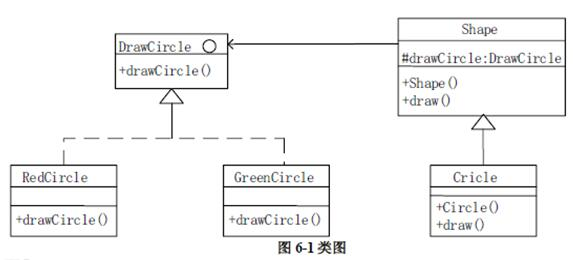( 18 )阅读下列程序Public class Test implements Runnable{Private int x=0;Private int y=o;boolean flag=true;Public static void main(string[ ] args) {Test r =new Test( );Thead t1=new Thead(r);Thead t2=new Thead(r);t1.start( );t2.start( );}Public void run(){While(f
题目
( 18 )阅读下列程序
Public class Test implements Runnable{
Private int x=0;
Private int y=o;
boolean flag=true;
Public static void main(string[ ] args) {
Test r =new Test( );
Thead t1=new Thead(r);
Thead t2=new Thead(r);
t1.start( );
t2.start( );
}
Public void run(){
While(flag) {
x++;
y++;
system.out.println( “ ( ” +x_ “ , ” +y+ ” ) ” );
if (x>=10)
flag=false;
}
}
}
下列对程序运行结果描述的选项中,正确的是
A)每行的( x,y )中,可能有;每一对( x,y )值都出现两次。
B)每行的( x,y )中,可能有;每一对( x,y )值仅出现一次。
C)每行的( x,y )中,可能有 x=y ;每一对( x,y )值都出现两次。
D)每行的( x,y )中,可能有 x=y ;每一对( x,y )值都出现一次。
相似考题
更多“( 18 )阅读下列程序Public class Test implements Runnable{Private int x=0;Private int y=o;bo ”相关问题
-
第1题:
有以下程序:includeusing namespace std;class A{private: int x,y;public: void se 有以下程序: #include <iostream> using namespace std; class A { private: int x,y; public: void set (int i,int j) { x=i; y=j; } int get_y() { return y; } }; class box { private: int length,width; A label; public: void set(int 1,int w, int s,int p) { length=1; width=w; label.set(s,p); } int get_area() { return length*width; } }; int main() { box small; small.set(2,4,1,35); cout<<small.get_area()<<end1; return 0; } 运行后的输出结果是( )。
A.8
B.4
C.35
D.70
正确答案:A
解析:本题考核成员对象的应用。类box的成员函数set()为设置对象的坐标值和对象的长、宽值。成员函数setarea返回该对象的面积。程序最后输出为8。 -
第2题:
有以下程序:includeusing namespace std;define PI 3.14class Point{ private:int 有以下程序: #include <iostream> using namespace std; #define PI 3.14 class Point { private: int x,y; public: Point(int a,int b) { x=a; y=b; } int getx() { return x; }
A.314
B.157
C.78.5
D.153.86
正确答案:A
解析:本题考核派生类的定义和应用。本程序设计了一个点类Point,包含了横、纵两个坐标数据x和y,由它派生出了圆类Circle,并加入了新的数据成员,即一个半径r和一个求圆面积的函数成员area。在主函数main中,首先定义了一个圆Circle类的对象c1,并通过它的构造函数初始化其数据成员。由此可知,其半径r的值为10,所以其面积为PI*10'10=314,即对象c1的函数成员area的返回值为314。 -
第3题:
阅读以下说明和Java程序,填写程序中的空(1)~(6),将解答写入答题纸的对应栏内。
【说明】
以下Java代码实现一个简单绘图工具,绘制不同形状以及不同颜色的图形。部分接口、类及其关系如图5-1所示。


【Java代码】
interface?DrawCircle?{? //绘制圆形 public(1) ;}class?RedCircle?implements?DrawCircle?{? ?//绘制红色圆形???????public?void?drawCircle(int?radius,intx,?int?y)??{????????????System.out.println("Drawing?Circle[red,radius:"?+?radius?+",x:"?+?x?+?",y:"?+y+?"]");???????}}class?GreenCircle?implements?DrawCircle?{????//绘制绿色圆形??????public?void?drawCircle(int?radius,?int?x,int?y)?{???????????System.out.println("Drawing?Circle[green,radius:"?+radius+",x:?"?+x+?",y:?"?+y+?"]");??????}}abstract?class?Shape?{????//形状? protected? ? (2)???;? ? public?Shape(DrawCircle?drawCircle)?{? ?this.drawCircle=?drawCircle;? ? ? public?abstract?void?draw();}class?Circle?extends?Shape?{? //圆形? ?private?int?x,y,radius;? public?Circle(int?x,int?y,intradius,DrawCircle?drawCircle)?{? ?(3)???;? this.x?=?x;? ? ? this.y?=?y;? ?this.radius?=radius;? }? ? ?public?void?draw()?{? ? drawCircle.? ?(4)? ?;? ? ? }}public?class?DrawCircleMain?{? public?static?void?main(String[]?args)?{? Shape?redCircle=new?Circle(?100,100,10,? (5) );//绘制红色圆形? Shape?greenCircle=new?Circle(200,200,10,(6) );//绘制绿色圆形? ?redCircle.draw(); greenCircle.draw();? ?}}答案:解析:(1)void drawCircle (int radius,int x,int y)
(2)DrawCircle drawCircle
(3)super.drawcircle=drawcircle
(4)drawCircle(radius,x,y)
(5)new RedCircle()
(6)new GreenCircle()【解析】
第一空是填接口里面的方法,在接口的实现里面找,可以发现应该填void drawCircle (int radius,int x,int y)。
第二空可以根据后面this drawCircle=drawCircle判断,这里应该有一个drawCircle属性,因此应该填)DrawCircle drawCircle。
第三空这里用super,用super. drawcircle来引用父类的成员。
第四空调用drawCircle(radius,x,y)方法。
第五、六空分别创建一个红色圆形对象和一个绿色圆形对象作为Circle里面的实参。 -
第4题:
阅读下面程序:includetemplate class TAdd{private:T x, y;public:TAdd(T 阅读下面程序:
include <iostream.h>
template <class T>
class TAdd
{
private:
T x, y;
public:
TAdd(T a, T b)
{
x=a;
y=b;
}
T add()
{
return x +y;
}
};
void main( )
{
TAdd<int>a(5,6);
TAdd<double>b(2.4,5.8);
cout<<"s1 ="<<A. add()<<",";
cout<<"s2="<<B, add()<<end1;
}
写出该程序的运行结果:【 】。
正确答案:s1=11s2=8.2
s1=11,s2=8.2 -
第5题:
若有以下程序:includeusing namespace std;class A{private: int a;public: A(int 若有以下程序: #include <iost ream> using namespace std; class A { private: int a; public: A(int i) { a=i; } void disp () { cout<<a<<", "; } }; class B { private:
A.10,10,10
B.10,12,14
C.8,10,12
D.8,12,10
正确答案:D
解析:本题考核派生类构造函数的使用。本题中,派生C具有多重继承关系,所以在派生类C的构造函数中应该包含基类A和B的成员初始化列表。而且派生类C中的成员函数disp分别调用了基类A、B的公有成员函数disp()用于输出基类中私有数据变量初始化后的值。所以由类C构造函数的初始化形式可知,程序最后输出为8,12,10,即D选项。 -
第6题:
阅读下列说明和C++代码,填写程序中的空(1)~(6),将解答写入答题纸的对应栏内。
【说明】
以下C++代码实现一个简单绘图工具,绘制不同形状以及不同颜色的图形。部分类及其关系如图6-1所示。

【C++代码】
#include?#include?using?namespace?std;class?DrawCircle?{??????//绘制圆形,抽象类? ? ? public: (1);//定义参数为?int?radius,?int?x,?inty? ?virtual~DrawCircle()?{?}};class?RedCircle:public?DrawCircle?{????//绘制红色圆形? ? ? ? public: void?drawCircle(intradius,?int?x,?int?y)?{cout?<?drawCircle?=?drawCircle;? }? ?virtual~shape()?{?}? public:? ?virtual?void?draw()?=?0;};class?Circle:public?Shape?{????//圆形? ? private:? ? ?int?x,y,radius;? ? public:? Circle(int?x,inty,int?radius,DrawCircle?*drawCircle)? (3)? {? this->x?=?x;? ?this->y?=?y;? ? this->radius?=?radius; }? ? ? public:? void?draw(){? drawCircle?-> (4); }};int?main(){Shape?*redCirclenew?Circle(100,100,10,????(5)????);//绘制红色圆形? Shape?*greenCircle=new?Circle(100,100,10, (6)??);//绘制绿色圆形redCircle >draw();? ?greenCircle?->draw();? ?return?0;}答案:解析:(6)(1)void drawCircle (int radius,int x,int y)
(2)DrawCircle*drawCircle
(3)drawcircle
(4)drawCircle(radius,x,y)
(5)new RedCircle()
(6)new GreenCircle()【解析】
第一空是填接口里面的方法,在接口的实现里面找,可以发现应该填void drawCircle (int radius,int x,int y)。
第二空可以根据后面this drawCircle=drawCircle判断,这里应该有一个drawCircle属性,因此应该填)DrawCircle drawCircle。
第三空这里填drawcircle,用-> drawcircle来引用父类的成员。
第四空调用drawCircle(radius,x,y)方法。
第五、六空分别创建一个红色圆形对象和一个绿色圆形对象作为Circle里面的实参。
